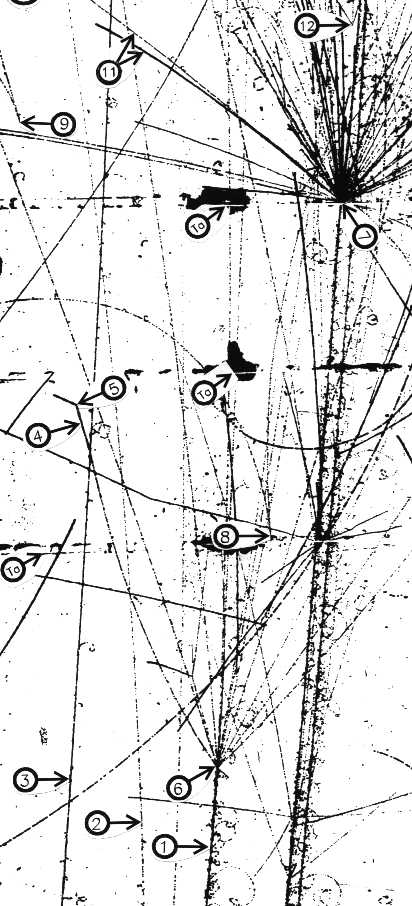| Fotografia, stanowiąca tło pierwszej strony mojej Home-Page, przedstawia tory cząstek
elementarnych i fragmentów jądrowych zarejestrowanych w komorze pęcherzykowej wypełnionej ciekłym propanem, C3H8.
Komora naswietlona była wiazką jąder węgla o pędzie 4.2 GeV/c na nukleon.
Zdjęcie pochodzi z Laboratorium Wysokich Energii Zjednoczonego Instytutu Badań Jądrowych w Dubnej
koło Moskwy gdzie przebywałem przez parę lat zajmując sie także analizą podobnych temu zdjęć. Komora umieszczona była w polu magnetycznym. Tory cząstek dodatnich zakrzywione są w lewą stronę, cząstek o ładunku ujemnym - w prawo. W komorze znajdowały się trzy płytki tantalowe o gruboci 1mm. |
The background of my Home-page presents the tracks of particles and nuclear fragments registered in the propane (C3H8) bubble chamber.
The chamber was irradiated by the Carbon nuclei of 4.2 GeV/c per nucleon
at the Laboratory of High Energies of the Joint Institute for Nuclear Research in Dubna near Moscow. The chamber was placed in the magnetic field. The tracks of positively charged particles are deviated in the left-hand side direction, the negative particles are deviated to the right-hand side. Three Tantalum plates of 1mm thick were placed inside the chamber. |
|

|
|